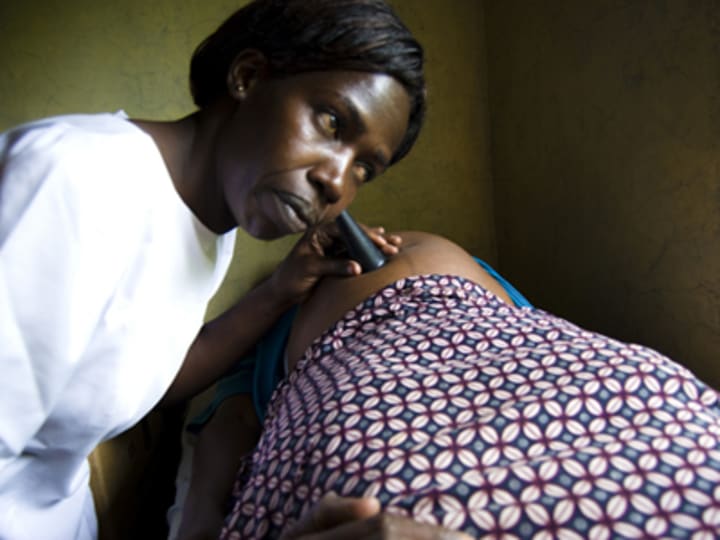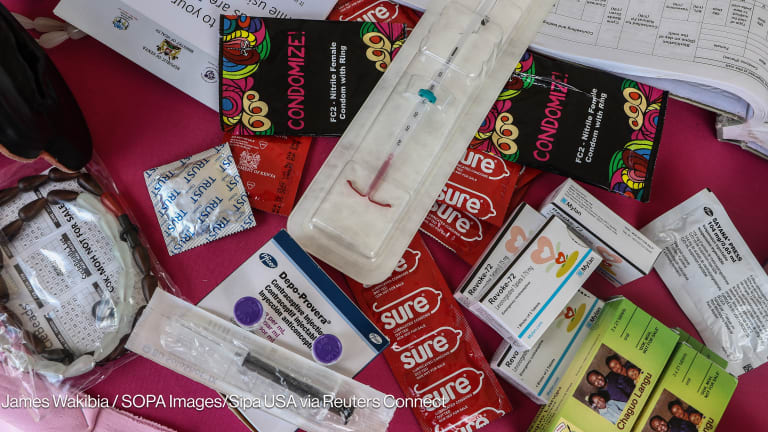
The international community has made significant progress on reducing child and maternal mortality, bringing the rates down by almost half since 1990.
However, with 800 days to go before the 2015 deadline, the Millennium Development Goals of reducing deaths for children under five by two-thirds and the maternal mortality ratio by three-quarters are unlikely to be met.
The solution may lie in achieving universal access to reproductive health, another MDG.
Devex spoke to thought leaders in these sectors to determine the status of these goals and the latest strategies being employed by the development community to address the existing challenges.
Simple solution
About 6.6 million children under five died in 2012, mostly from preventable diseases, and more than 80 percent of these deaths occurred in sub-Saharan Africa and South Asia. In addition, 800 women and girls die from pregnancy-related complications daily, 99 percent of them in developing countries.
Millions of women continue to give birth at home without the assistance of medical professionals and life-saving drugs. Further, unsafe abortion is a major cause of maternal deaths, noted Population Services International’s top expert on global HIV, TB and reproductive health Dr. Krishna Jafa.
Seema Jalan, director of the Universal Access Project and Policy for Women and Population at the U.N. Foundation, emphasized that these deaths are tragic because they could have been prevented with a simple and cost-effective solution: access to quality family planning.
Over 200 million women worldwide would like to delay or avoid pregnancy but do not have access to voluntary family planning methods, said Dr. Timothy Mastro, global health for population and nutrition manager at FHI 360. Jalan added that if this need were met, maternal mortality would be reduced by a third and infant mortality by 10-20 percent.
Investing in family planning information and services can thus save donors money in other health care costs.
This should be the basis for accelerating efforts to provide universal access to reproductive health, an MDG she says has seen far less progress than the others, and one that was initially excluded from the list and only added in 2007.
What’s being done now
The aid community has increasingly been ramping up attempts to meet these gender-focused MDGs.
Efforts include Every Woman Every Child, a global movement launched in 2010 by U.N. Secretary-General Ban Ki-moon, and has over 280 partners — including 70 governments — and a collective commitment of $1.15 billion in funding over three years from the World Bank, UNICEF, the U.S. Agency for International Development and Norway to ensure essential services and medicines reach women and children in developing countries with the highest rates of maternal and child deaths.
PSI currently reaches 10 million people at 16,000 franchised health facilities in Asia, Africa, Latin America and the Caribbean. The organization has chosen to prioritize increasing women’s and couple’s access to family planning and reproductive health care, including providing safe abortions when legal; increasing access to misoprostol, a drug used to treat post-partum hemorrhage and provide post-abortion care for incomplete abortion; reaching women with safe delivery kits to ensure safe deliveries; and screening and treatment for pre-eclampsia, which is one leading cause of risky pregnancies.
FHI 360 continues to perform clinical trials and conduct research on family planning services and collaborate with international organizations, national health ministries, and community-based organizations to investigate contraceptive technologies. The organization is currently looking into the identification and early testing of a longer-acting injectable contraceptive, which could be a game-changer in empowering couples to determine the size of their families. They are also working on a project to improve the assessment, monitoring and evaluation of nutrition for children ages six through 23 months.
Women, girls crucial to post-2015
Recognizing the central role of family planning in achieving development outcomes, a core group of donors including USAID, the U.N. Foundation, the U.N. Population Fund, International Planned Parenthood Federation, the Gates Foundation and Marie Stopes International are hosting an International Conference on Family Planning in Ethiopia in November.
Jalan acknowledged the critical role played by the U.S. government in international reproductive health and family planning assistance, but added that it must keep pace with global health funding overall and that in 2012, it represented only about 6 percent of global health funding.
Meanwhile, the U.N. Foundation is working with their partners to ensure that women and girls are at the center of the post-2015 framework and that there is a strong emphasis on campaigning against early marriage and increasing access to comprehensive sexuality education and quality reproductive health care and services.
These rights have proven to be critical in reducing maternal and infant mortality, increasing girls’ education, promoting women’s economic empowerment and achieving gender equality. An increased focus on adolescent girls, refugees, internally displaced persons, and girls and women who have experienced gender-based violence is also expected.
Read more development aid news online, and subscribe to The Development Newswire to receive top international development headlines from the world’s leading donors, news sources and opinion leaders — emailed to you FREE every business day.




